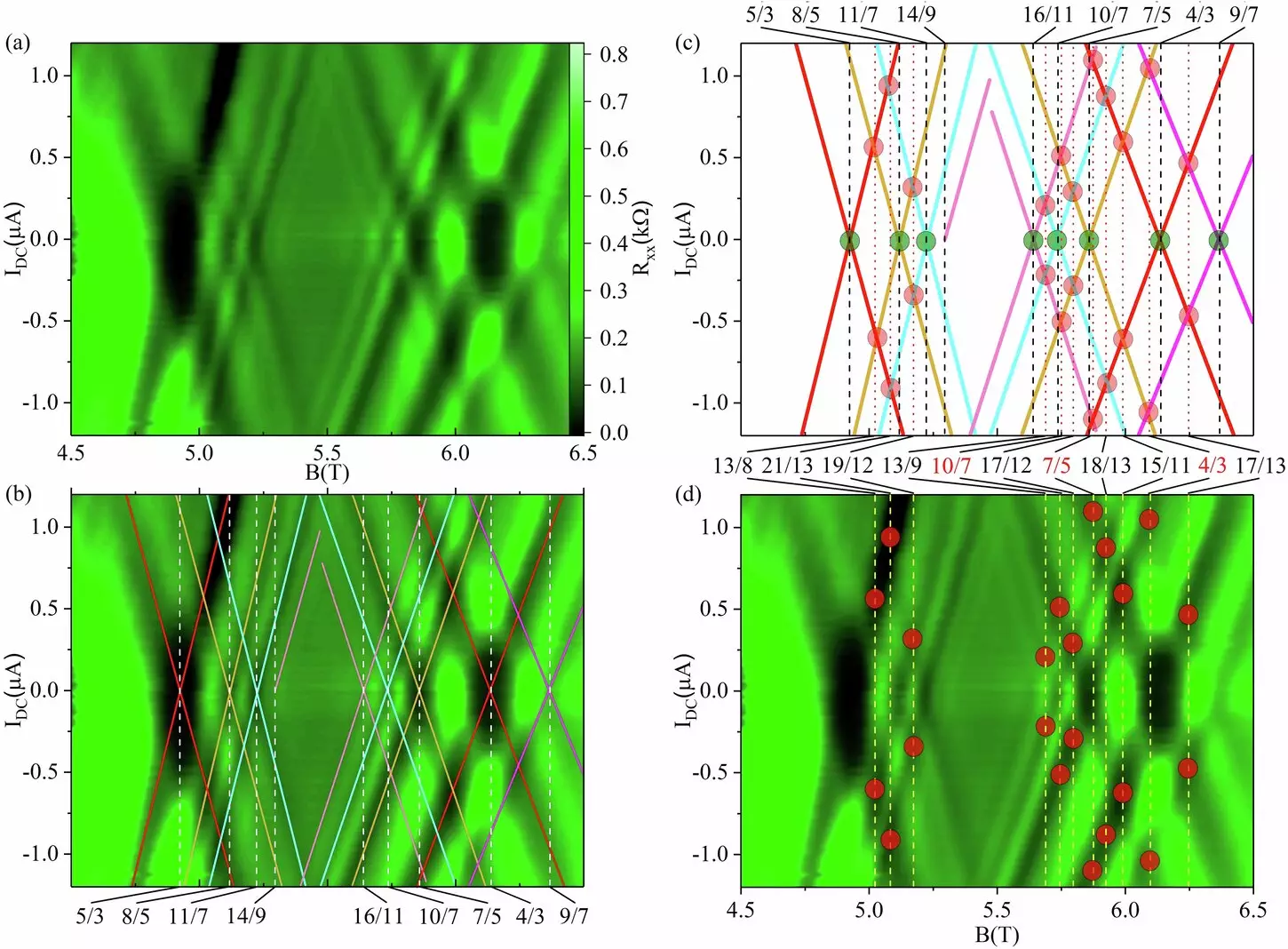The realm of physics often delves into the mysteries of our universe, but what if we imagined a world confined to just two dimensions? This concept is not just theoretical; researchers at Georgia State University are probing the intriguing landscape of fractional quantum Hall effects (FQHE) to unlock the secrets of particle behavior in this flatland scenario. Under the leadership of Professor Ramesh G. Mani and his recent Ph.D. graduate, U. Kushan Wijewardena, their groundbreaking research reveals phenomena that challenge established norms in condensed matter physics, illuminating the complex interactions within this exotic environment.
Since the inception of the quantum Hall effect in 1980 by Klaus von Klitzing, this area of study has opened unparalleled vistas in our understanding of electrical measurements and fundamental physical constants. The subsequent discovery of FQHE, which portrays particles in flatland as possessing fractional charges, has further propelled excitement in the field. Researchers have continually been intrigued by the behaviors exhibited by these unique particles, which possess a multifaceted array of characteristics that can shift and adapt based on their environment. With each breakthrough, scientists inch closer to harnessing these insights for technological advancements across various systems, from next-generation electronics to quantum computing.
The Georgia State team conducted a series of meticulous experiments under extreme conditions, allowing them to probe the nuances of FQHE in unprecedented ways. By cooling materials to temperatures near absolute zero and applying magnetic fields far stronger than Earth’s, they elevated their research into realms previously uncharted. Utilizing a sandwich structure comprised of gallium arsenide (GaAs) and aluminum gallium arsenide (AlGaAs), they created an environment conducive to observing quantum behaviors in flatland.
In a remarkable twist, the research illuminated unexpected phenomena where all observed FQHE states began to split and converge under their experimental setups. These transitions have enabled the scientists to investigate novel non-equilibrium states, thus revealing entirely new states of matter. The implications of these findings extend well beyond merely refining existing theories; they signify a potentially transformative leap in our understanding of particle interactions and the emergence of complex states.
The success of this research owes much to the high-quality crystal structures developed at the Swiss Federal Institute of Technology Zurich, crafted by esteemed professionals such as Professors Werner Wegscheider and Dr. Christian Reichl. The synergy between scientific inquiry and material engineering showcases the importance of foundational elements in conducting meaningful research. Ramesh Mani analogizes their work to exploring a multi-story building, emphasizing that while traditional studies may only skim the surface or the ground floor, their research aspires to investigate untapped upper levels, yielding insights that remain in the shadows.
The results of their experiments signify a paradigm shift in how physicists approach the understanding of fractional quantum Hall states. The innovative methodology employed—a direct current bias applied to induce excited states—provides an intriguing new avenue for exploration. By challenging preconceived notions and pushing the boundaries of theoretical frameworks, this research not only clarifies existing notions but also introduces the idea of a hybrid origin for these non-equilibrium states, thereby rekindling curiosity in the field.
As Wijewardena enthusiastically commented, this seriousness of claiming insights into these excited states could profoundly impact the trajectory of future research, holding the potential to inspire new technological endeavors. The excitement generated by these findings not only invigorates current scientific dialogues but also opens doors to future breakthroughs in quantum sciences.
The implications of this research extend beyond academic curiosity; they have the potential to impact real-world applications, spanning fields such as quantum computing and advanced materials science. By probing further into the complexities of these quantum phenomena, Mani, Wijewardena, and their team are laying not only the groundwork for future technological innovations but also nurturing the next generation of scientists who will continue to explore these exciting frontiers.
As they venture into even more extreme experimental conditions and develop new measurement techniques for flatland parameters, the horizon for discovery remains wide open. Each step forward promises to deepen our understanding of quantum systems and their intricate behaviors, underscoring the dynamic nature of condensed matter physics. This spirit of exploration, fueled by creativity and rigorous scientific inquiry, paves the way for newfound innovations that could redefine our electronic capabilities and enhance our high-tech economy.
The study of fractional quantum Hall effects is not merely an academic pursuit; it embodies the pursuit of knowledge that has the potential to transform our world, urging scientists to push boundaries and illuminate the unknown.


Leave a Reply